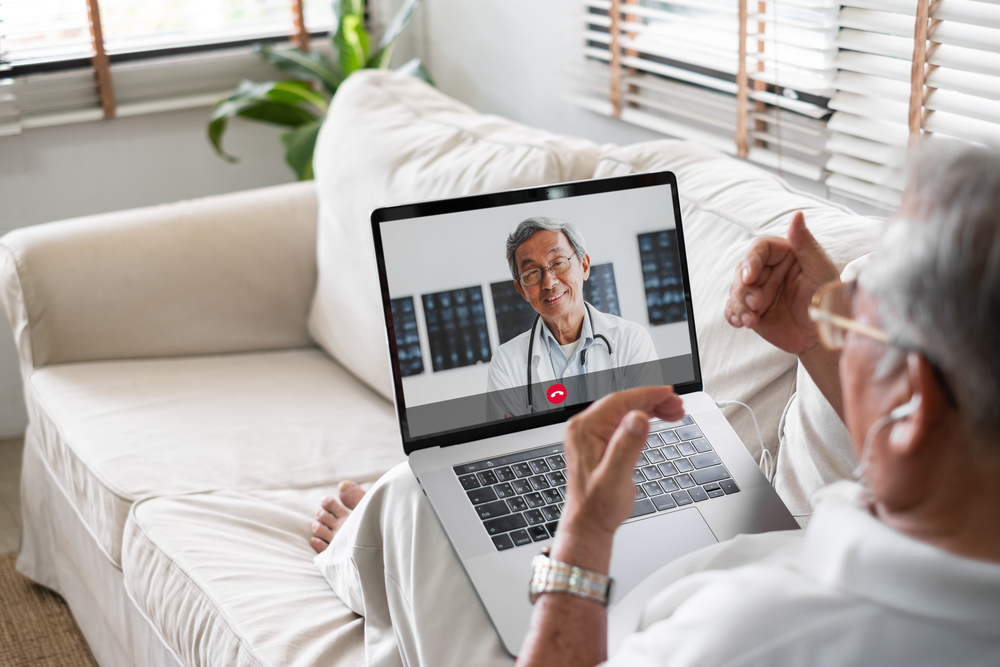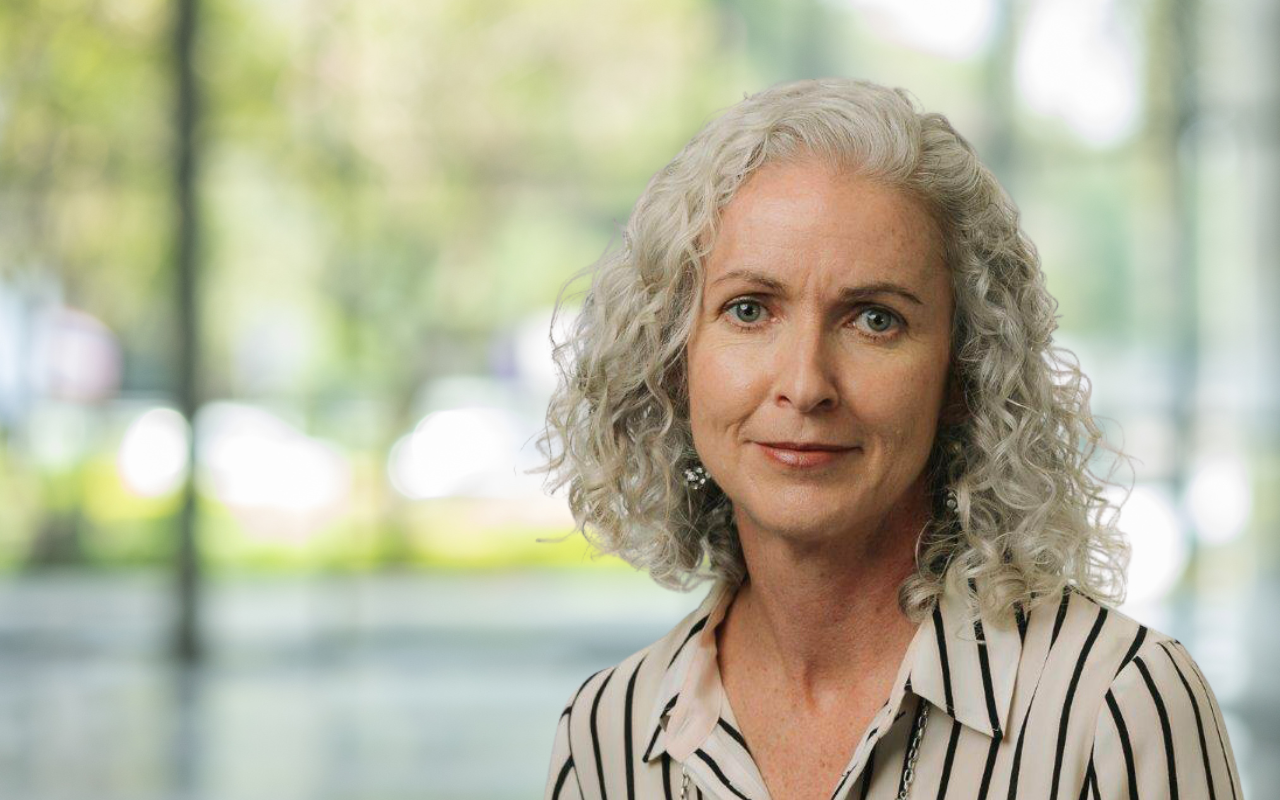Telehealth should be available, when needed, to support all types of health care, including voluntary assisted dying.
For patients in remote and regional areas, telehealth has been a game changer. It has made timely, high quality care possible, especially for those who cannot travel for in-person appointments, either because they are too unwell, or too far away.
Unfortunately, for terminally ill Australians who want to access voluntary assisted dying (VAD), a telehealth option does not exist. In fact, using telehealth for VAD assessment is banned by federal law.
At present, the decision about whether telehealth is clinically appropriate in VAD care lies with politicians in Canberra.
An anomaly in the Commonwealth Criminal Code Act 1995 means that health professionals are prohibited from discussing large parts of the VAD process via any electronic communications; this includes telehealth, phone, email, text — even fax. If they do, they risk criminal prosecution and a $300 000 fine.
These restrictions affect not only doctors conducting VAD assessments, but also nurses, pharmacists and social workers who cannot provide advice or answer questions from patients or colleagues over the phone or receive scripts via fax or email.

VAD allows terminally ill people with advanced and progressive illnesses, and who are suffering, to have a choice over the timing and circumstances of their death. It is legal and available in all six Australian states, with the ACT expected to pass a law later this year.
During the pandemic, we became familiar with telehealth. Something that began out of necessity has continued.
For VAD, in-person appointments are always preferred by clinicians. However, for terminally ill people who may be unwell or living in remote areas, requiring in-person appointments for every part of the VAD process is unreasonable. At worst, it can be the difference between accessing care and not.
Like Tom*, a 79-year-old with end-stage lung disease in Far North Queensland. Dying with a list of increasingly harrowing symptoms, Tom requested access to VAD, but was too unwell to travel for in-person assessments by two independent doctors. Denied the option of telehealth, a doctor in Ipswich made a 3000 km round trip to assess his eligibility. A week later, a second independent doctor travelled 2500 km to provide his second assessment. Finally, the first doctor had to return (another 3000 km) to witness and accept Tom’s final request.
Five days later, the pharmacy received the VAD prescription (which the telehealth ban also requires must be hand-delivered) but unfortunately those three weeks and 8500 km were to no avail; Tom, by now a very sick man, died before the medication could be dispensed.
Tom spent his final precious days stuck in a stressful cycle of pain and uncertainty when he should have been supported and at peace.
Australia is an outlier when it comes to the telehealth ban for VAD. Telehealth for VAD care is routinely used in New Zealand, the United States and Canada.
Electronic communication, including telehealth, is used successfully in other sensitive areas of medicine such as mental health, palliative care and termination of pregnancy. The same high standards apply to VAD care, regardless of whether it is provided by telehealth or in person. And all telehealth consults are covered by guidance from the Australian Health Practitioner Regulation Agency.
Telehealth should be available, when needed, to support all types of health care, including VAD.
The Australian Medical Association, the Society of Hospital Pharmacists of Australia (SHPA), and the Law Council of Australia agree.
In February, Western Australian independent Member of Parliament Kate Chaney introduced a bill to the House of Representatives to fix this issue. Will politicians provide time to debate this much-needed reform?
Almost five years of evidence shows that VAD is operating safely, and with great care and compassion. Banning telehealth does not make it any safer. It is time to remove this antiquated and discriminatory impediment to high quality care.
*Tom’s name has been changed to protect his privacy.
Dr Linda Swan is a former GP and the CEO of Go Gentle Australia, a charity working nationally to promote choice at the end of life, including the option of voluntary assisted dying.
Go Gentle Australia and VADANZ (the peak body for voluntary assisted dying health professionals) will present the second trans-Tasman Voluntary Assisted Dying Conference, to be held in Brisbane on 28-29 October 2024.
The statements or opinions expressed in this article reflect the views of the authors and do not necessarily represent the official policy of the AMA, the MJA or InSight+ unless so stated.
Subscribe to the free InSight+ weekly newsletter here. It is available to all readers, not just registered medical practitioners.
If you would like to submit an article for consideration, send a Word version to mjainsight-editor@ampco.com.au.

 more_vert
more_vert
Telehealth in this country is a dangerous beast totally out of control. Many of the telehealth companies are funded and run by private entrepeneurs who are in a mad race to the bottom. They continue to undercut each other, encroach on areas where they don’t belong, break every rule that exists and cut corners at every opportunity. No government authority seems capable or willing to rein in the mess. Until some law and order is introduced in to the telehealth sector no professional organisation should be advocating an expansion in to what can only be described as the wild wild west.
We are fortunate in New Zealand not to have this barrier. Doctors, nurse practitioners and clinical advisers are able to use tele-communications for discussions on assisted dying when it is desirable to do so. There have been no negative repercussions in our past 2.5 years of assisted dying practice because of this. It seems like the prohibition in Australia is a barrier that is maintained purely for ideological reasons; it has little to do with safeguards.
I have no experience with VAD, but I have had the privilege of discussing end of life care in a remote nursing home via telemedicine. The dying person was in the room (but was not responsive), with two daughters and the caring RN. We discussed the issues frankly and made a plan. Nobody had to travel, or even to wait.
There is no reason why end-of-life discussions should be any less satisfactory via video than face-to-face. Both settings require empathy, good communication skills and excellent documentation.
Of course it should be changed. Forcing already unwell people to make appointments that can be managed by video or telephone just makes sense. This is just another barrier that needs to be modernised.
Having had some experience of my attempts to have the access to this process prior to the need for intervention has been an utter nightmare. My “problem” does not fall within the usual expected parameters.in that while a physical problem exists where i remain largely functional i have been clearly informed that i the event of certain events occurring death would be certain and the process possibly last for several days in acute pain.
However I have NOT been able to put in place for myself the access to V.A.D. until after that event occurs, whenever that may be. Even though I have been told that I may well be no longer mentally functional and therefore not able to initiate the resolution.
This is a really difficult and seemingly impossible issue for WA’s VAD team to come to a good solution for my situation.
The Telehealth Video Interview was extremely uncomfortable for me in spite of my long Clinical and Nursing experience. I felt very uncomfortable discussing on a video call with a complete stranger any of the issues put to me. I am aware that the majority of doctors do not understand my health issue. It is a mechanical problem, caused by a Surgical/Medical error/accident initially, three surgeries failed, and the ramifications have been nothing short of horrendous to me both in quality and shortening of my life as a result.
There is no recognition either by the Assessors or the guidelines that they follow for such a situation.
The stress caused by Medical failure to acknowledge this deficit in the process simply has made it worse.
Hi anonymous. Patients should have the right to choose on this most personal choice, especially the mode of palliative care. Many are grateful to have the offer of a choice in my experience. Even if they may not take the medication at the end.
Randall, so called ‘slippery slope’ arguments on issues such as VAD, abortion, preimplantation genetic diagnosis, legalisation of recreational cannabis etc, are invariably proposed by those who, either overtly or covertly, object strongly to the first step onto the slope!
They also presume that society at large, with evolving mores and values (that have led to VAD being embraced by the majority of the population in this country), is incapable of ‘self-control’ when it comes to morally important issues. I am not that pessimistic!
Also, your point about the importance of so-called “safeguards” in VAD legislation is interesting. As a palliative care physician who incorporates VAD into my practice (for a minority of patients), it is clear to me that many of the original “safeguards” in the Victorian VAD Act, for example, are in fact impediments to equitable access to this end-of-life option. If we have VAD legislation then it should be fair and accessible for those patients who are eligible.
The Telehealth “ban” is just another impediment and is discriminatory.!
VAD delivered by telehealth is very convenient but also very UNSAFE.
Almost all VAD assessors are unknown to the patient before he or she seeks VAD. To think doctors can make proper VAD assessments for people who they have never met before for this most serious IRREVERSIBLE undertaking and can also exclude depression and coercion and establish motivation is fanciful.
If telehealth isn’t good enough for metropolitan patients then it shouldn’t be good enough for regional patients either.
If telehealth is allowed many will want assessments this way. When technical failures strike assessments will end up on the phone – which is even worse.
Safety must come before convenience on the issue of VAD
Thanks Linda.
This issue is the perpetual ‘thorn in the side’ of health professionals involved in VAD assessments and even more so for patients like “Tom” and their families. It is the major impediment to equitable, compassionate and timely VAD assessment and provision throughout all Australian states.
There is absolutely no logical reason for the Criminal Code impediment to VAD-related telehealth communications. Those clauses were designed to pertain to entirely different scenarios.
I have never heard a cogent argument for maintaining this ‘ban’ with respect to VAD.
Therefore, I’m assuming that Kate Chaney’s Bill won’t require any long-winded debate but merely a sensible discussion, followed by a simple word change to that section of the Criminal Code!
Many of us were concerned about the slippery slope phenomenon. essentially indication-creep, once VAD was established. So we have seen moves to broaden options and indications, calls for VAD to be available for mental illness and other non-terminal diseases and even access to VAD by minors. One of the original safeguards was the insistence on face to face meetings between doctor and those requesting VAD , and now there is a push to extend this tele-health consultations. While I can see the need for this in some situations, eg country or remote patients with limited access, it seems another example of gradual softening of the original safeguards. Any changes to the original carefully thought-out safeguards should be approached with caution.
Sounds like appalling palliative care. VAD should never be palliative care on the cheap.